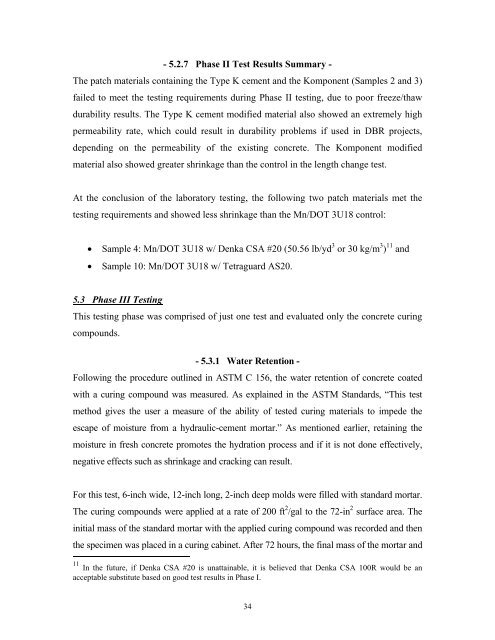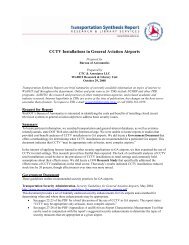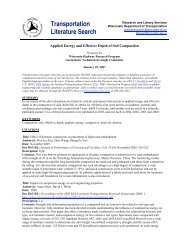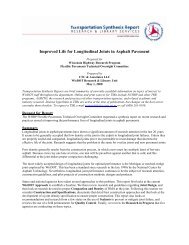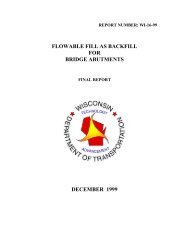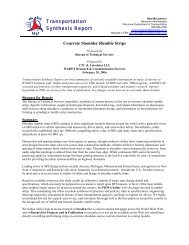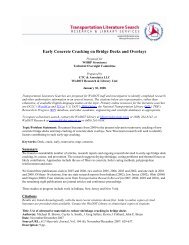DateLaboratory Testing of Portland Cement Concrete Patch Material ...
DateLaboratory Testing of Portland Cement Concrete Patch Material ...
DateLaboratory Testing of Portland Cement Concrete Patch Material ...
Create successful ePaper yourself
Turn your PDF publications into a flip-book with our unique Google optimized e-Paper software.
- 5.2.7 Phase II Test Results Summary -The patch materials containing the Type K cement and the Komponent (Samples 2 and 3)failed to meet the testing requirements during Phase II testing, due to poor freeze/thawdurability results. The Type K cement modified material also showed an extremely highpermeability rate, which could result in durability problems if used in DBR projects,depending on the permeability <strong>of</strong> the existing concrete. The Komponent modifiedmaterial also showed greater shrinkage than the control in the length change test.At the conclusion <strong>of</strong> the laboratory testing, the following two patch materials met thetesting requirements and showed less shrinkage than the Mn/DOT 3U18 control:• Sample 4: Mn/DOT 3U18 w/ Denka CSA #20 (50.56 lb/yd 3 or 30 kg/m 3 ) 11 and• Sample 10: Mn/DOT 3U18 w/ Tetraguard AS20.5.3 Phase III <strong>Testing</strong>This testing phase was comprised <strong>of</strong> just one test and evaluated only the concrete curingcompounds.- 5.3.1 Water Retention -Following the procedure outlined in ASTM C 156, the water retention <strong>of</strong> concrete coatedwith a curing compound was measured. As explained in the ASTM Standards, “This testmethod gives the user a measure <strong>of</strong> the ability <strong>of</strong> tested curing materials to impede theescape <strong>of</strong> moisture from a hydraulic-cement mortar.” As mentioned earlier, retaining themoisture in fresh concrete promotes the hydration process and if it is not done effectively,negative effects such as shrinkage and cracking can result.For this test, 6-inch wide, 12-inch long, 2-inch deep molds were filled with standard mortar.The curing compounds were applied at a rate <strong>of</strong> 200 ft 2 /gal to the 72-in 2 surface area. Theinitial mass <strong>of</strong> the standard mortar with the applied curing compound was recorded and thenthe specimen was placed in a curing cabinet. After 72 hours, the final mass <strong>of</strong> the mortar and11 In the future, if Denka CSA #20 is unattainable, it is believed that Denka CSA 100R would be anacceptable substitute based on good test results in Phase I.34


